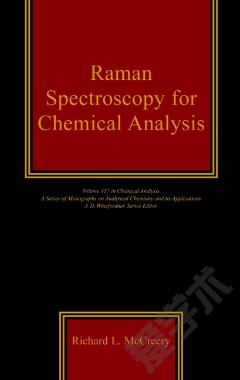Raman Spectroscopy for Chemical Analysis
Many scientists have a passing familiarity with Raman spectroscopy and those of us who have tried using it, say 15 years ago, to identify chemical groups were probably disappointed. At the time, a long recording time and poor signal/noise ratios did not inspire strong recommendations for chemical analysis. This was disappointing because there was always a deep-seated feeling that here was a technique that could be capable of detailed chemical analysis, indeed chemical imaging. How things have changed! The more widespread use of infrared lasers, CCD detectors and signal processing using powerful PCs have all reduced the recording times from around one hour to about 30 seconds. The general convenience of the technique is bringing it to the attention of a wider audience of chemists and materials scientists. This volume by McCreery is another in the excellent Wiley series of monographs on Analytical Chemistry. These have provided a very high standard, indeed a `flagship' of authority and quality in this broad area. The treatment given here will capture the attention of both the novice who wants to find out how Raman spectroscopy works, and the expert practitioner who requires some original sources of information. It will be very useful to all researchers who use, or wish to use, the Raman technique. The introductory sections really do highlight the differences to be expected between modern Raman techniques and the `rival' techniques of near infrared (NIR) and Fourier transform infrared (FTIR) spectroscopies. The treatment is a no-nonsense, pragmatic approach, with comparable spectra for the techniques, warts and all! Later sections then go on to give a rigorous analysis of signal levels, signal/noise ratios and practical details of the lasers, detectors and software that are best suited to specific needs and applications. There are several extensions of Raman spectroscopy that have been made possible by improved software and instrumentation in recent years, but probably the ability to form images is the one that will capture a large share of devotees. In conclusion, McCreery gives a very well balanced and authoritative account of Raman microscopy in all its different variants. He repeats this very effectively for its application via fibre-optic probes, and the examples that he has selected are clear, simple and useful. The section on surface enhanced Raman spectroscopy (SERS) is a model of clarity and one that I will use in future lectures. I can recommend this volume without hesitation. P J Dobson
{{comment.content}}








 京公网安备 11010802027623号
京公网安备 11010802027623号